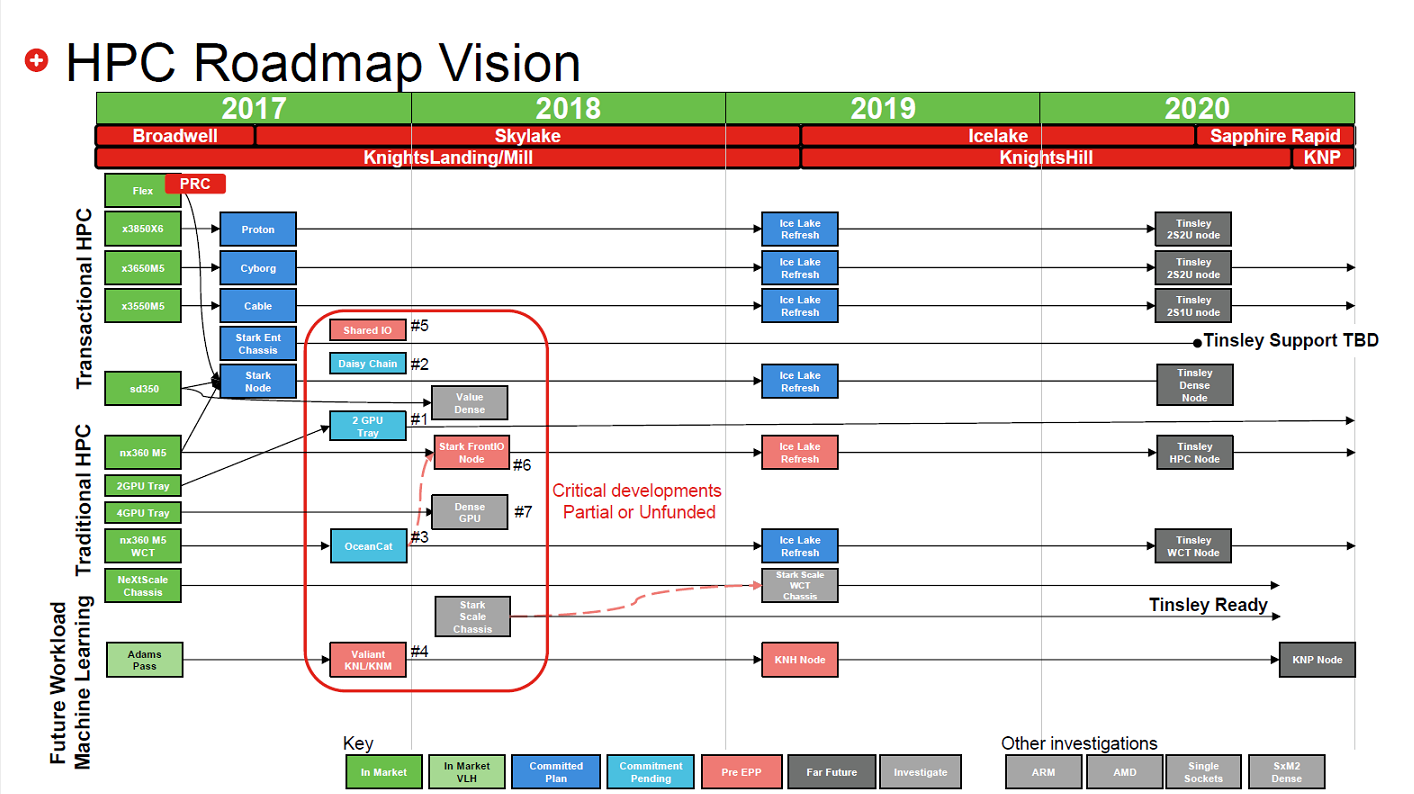10nm Xeon Phi, also known as Knights Hill, uses the Atom Goldmont core as its base.
Intel
heavily underestimated Nvidia. Their much touted Nervana accelerators were supposed to beat GPUs in DL by 3-5x. This year's Volta GPU not only likely beats 2019's Knights Hill in DP FP performance, the tensor accelerators inside Volta beats yet to be released Nervana accelerators by 2x. So with a single powerful solution, it does better than two seperate ones and is earlier to market.
Then again, if 10nm wasn't delayed we should have been having Knights Hill this year.
Their execution faltered because of shoddy and inconsistent management, and process got delayed. So they had to change plans. Actually end of Moore's Law scaling is the real brick wall. Unfortunately for Intel it seems they have chosen a real bad time to screw up on execution.
Revolutionary designs seem only revolutionary because the real hard work is done behind closed doors though. Also, tech advancements don't last forever. Computer chips until recently has been the only area in technology where the improvements were breathtaking. All other areas of tech has reached its diminishing returns. The sole reason for computer chips having exponential gains were single handedly due to Moore's Law scaling. Now, its practically at its end.
How's this for a sobering thought? Imagine if diminishing returns regarding new CPUs were at the rate of battery tech advancement.




